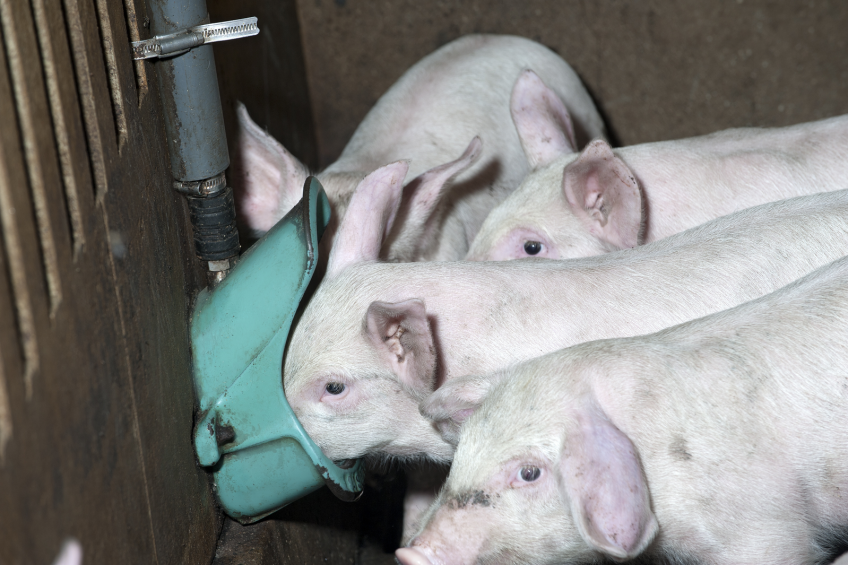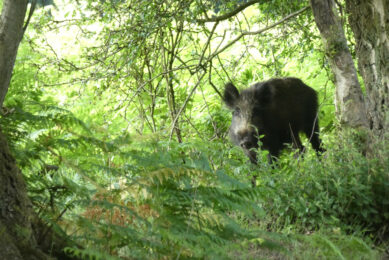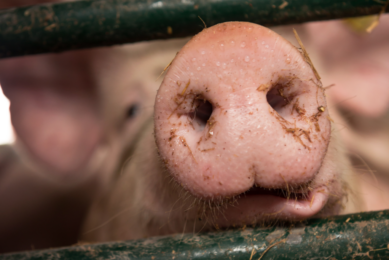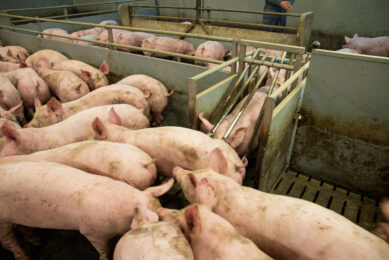Be vigilant about worm control

Good worm control has always been an important part of profitable pig production. But with feed prices near record highs, producers will want to be even more vigilant since worms can reduce feed efficiency, growth rate and profitability.
By Miquel Collell, director, swine scientific affairs, MSD Animal Health
“We have anthelmintics available that should provide sufficient control, but deworming programs have to be designed and followed properly. Many farms have established excellent worm control regimens – but others have not,” says Prof Dr Arwid Daugschies, Diplomate European Veterinary Parasitology College and director, Institute of Parasitology, University Leipzig, Germany.
One reason some producers may fail to establish a good deworming programme is because they don’t believe worms are important or they don’t realise that their animals have worms.
“Worm infections are often not related to clinical disease and may be erroneously regarded by producers as unimportant,” he explains. “Subclinical disease due to worms in particular is not readily apparent and may well lead to production losses.”
The type of worms most likely to be present in swine varies at different stages of production. Older animals such as sows, for example, are often infected with the nodular worm called Oesophagostomum species, Daugschies says. Heavier infection with nodular worms can interfere with digestion and result in enteritis, colitis and diarrhoea. These are the parasites that result in ‘pot bellies’.
In fattening units, large roundworms known as Ascaris suum clearly predominate, he continues. “Fattening units are generally contaminated with eggs of this worm and thus, infection shortly after transport to the fattening farm is a continuing risk,” he says. The result may be reduced weight gain and condemnation of livers due to milk spots.
The prepatency period – the time between initial infection of pigs and when eggs or larvae can be recovered – is at least six weeks for large roundworms, and there may be another cycle of parasite reproduction before the infection becomes obvious, the professor cautions.
Whipworms in group-housed sows
Gilles Delisle, a veterinarian in France, agrees that large roundworms are the biggest problem in the grow-out facility. However, among sows in group housing, the worm he finds is the biggest problem is whipworm, otherwise known as Trichuris suis, says Delisle, a veterinarian with the Clinique Vétérinaire du Clair Matin, Bourg-en-Bresse, France, a practice that provides care to about 200 swine herds of varying sizes.
There is also a strong relationship between the use of straw and whipworms, he says.
Dr Gerhard Kissel, a senior scientist with MSD Animal Health, agrees that whipworms can be isolated on many swine farms and says they have a significant adverse impact by impeding weight gain and feed efficiency.
“Notably, whipworm eggs are very hardy and can last up to ten years in the environment, so shedding of T. suis eggs in the manure can result in long-term contamination of production facilities,” he says.
Heavy whipworm infection causes haemorrhagic diarrhoea and emaciation, and may be confused clinically with swine dysentery or proliferative enteritis, Kissel says.
When infection is less severe, the only sign of trouble may be several poor-performing animals within a group of pigs that otherwise appear to be growing normally. “The problem may not be obvious, but it is preventing optimal growth throughout the herd,” he says.
Cost of worms
While there is no doubt that worm infections are costly, determining their exact toll on production and profits is difficult because the situation can vary so widely among farms.
Ian Watson, national pig specialist for ABN, a leading British manufacturer of compounded pig feed, says intestinal worm infestations can have a major effect on growth rates and feed conversion, potentially causing drops by as much as 10-13% in individual pigs. Annual losses can add up to £3,450 (€3,987) per 100 sows, according to news reports.
The UK’s Responsible Use of Medicines in Agriculture Alliance (RUMA), an initiative of organisations from every stage of the ‘farm to fork’ process, provides broad estimates for the cost of worm infestation in its 2010 document Guidelines, Anthelmintics in Pigs.
The effects of large roundworms in growing pigs are additive, RUMA says. It can slow growth by up to 50 g/ day between weaning and slaughter, costing an estimated 12 additional days of growth and a financial penalty of €3.46 in extra feed, and it will exacerbate other diseases such as colitis and respiratory illness. In addition, the parasite can reduce lean meat percentage and lead to condemnation of livers at slaughter.
Severe infestation with whipworms in growing pigs has been seen to slow growth by 15%, equivalent to a growth loss amounting to 120 g/ day and adding 16 days to age with an additional feed cost of €4.64 per pig using 2009 prices. This is in addition to treatment costs and loss of quality in the growing animal, RUMA says.
‘Dramatic, damaging’
“It can thus be seen that worm parasites alone can have dramatic, damaging and costly effects on pigs, not to mention the health and welfare detriment they suffer,” RUMA says, adding that a routine monitoring and control programme is ‘essential for all pig-keeping enterprises’.
There are a few other important reasons that pig producers need to be vigilant about worm control in their herds. Daugschies says that internal parasite infection can interfere with the development of immunity after vaccination for other diseases, such as mycoplasma. Other experts point out that some intestinal worms in pigs, particularly large roundworms and whipworms, can infect humans.
Delisle points out that good worm control indirectly helps reduce the use of antibiotics in swine by improving the immune response to vaccines administered to combat bacterial disease.
New worm control option
One new worm-control option in Europe is Panacur AquaSol (fenbendazole), a new, stable water formulation of a broad-spectrum anthelmintic that has been used worldwide. Produced with a proprietary manufacturing process, it reportedly does not clog pipes, filters or drinking nipples – problems that, in the past, have discouraged swine producers from using water-administered wormers. More importantly, experts report good efficacy against important swine parasites after only two or three days of treatment.
Daugschies, who was involved in clinical studies with this worm-control product, reports that “the efficacy was excellent and application convenient. It appears that due to improved bioavailability, the migrating stages of large roundworms can be better controlled.”
He explains, “If larvae are killed during migration, the adult worm burden and thus the production of the next generation of eggs will be reduced, leading to lower infection pressure in the stable. Moreover, lesions induced by migrating larvae in the liver and lungs will be limited.”
Daugschies believes that water medication is ‘surely a good alternative to other modes of treatment’, but says that all worming programmes must be coupled with good hygiene for adequate worm control.
“Hygiene is a major issue and it is very obvious that hygienic conditions play an important role,” the professor emphasises. Solid floors and moist litter increase the likelihood of transmission, whereas slatted floors reduce the contact of pigs to infective stages. Suitable, approved disinfectants should be used and pest control is important,” he says, noting that ‘outdoor systems reduce the options for hygienic measures’.
In France, Delisle is also familiar with this solution and recommends producers try it due to its efficacy and safety profile and because it is easy to administer and only requires a short treatment time. The solution is indicated for the treatment and control of gastrointestinal nematodes in pigs infected with the adult, intestinal and migrating larval stages of large roundworms (Ascaris suum), the adult stages of nodular worms (Oesophagostomum species) as well as whipworms (Trichuris suis). It requires two days treatment for large roundworms and nodular worms and three days treatment for whipworms.
At the moment, Panacul AquaSol is only available in Europe.
[Source: Pig Progress magazine Vol 30 nr 2, 2014]











